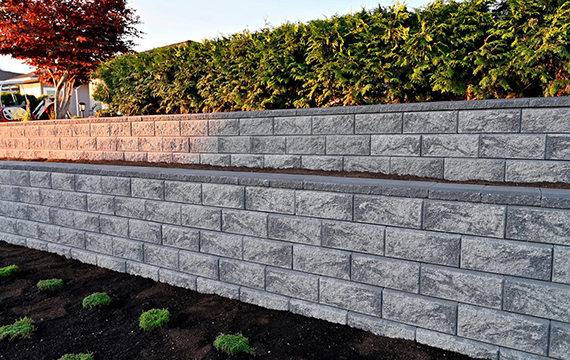

A retaining wall is a structure that holds or retains soil behind it. There are many types of materials that can be used to create retaining walls like concrete blocks, poured concrete, treated timbers, rocks or boulders. Some are easy to use, others have a shorter life span, but all can retain soil. Concrete retaining wall is best option among all.
When you invest in creating a beautiful landscape, you’re doing more than making your home or business more attractive. You’re increasing the value of your property. Recent studies show that you increase property values by as much as five to twelve percent by installing pleasant landscaping. As you begin to think about your landscape design, it’s easy to overlook the importance of having a strong retaining wall.
Retaining walls are structures designed to maintain the stability of a slope. You commonly see retaining walls surrounding sunken patios or supporting walkout basements. These structures are a must in any location where there is an abrupt change in ground elevation.
Without a retaining wall, the ground will experience downhill erosion. Depending on the direction of the hill, this erosion can lead to drainage or damage to your building. These walls are important for the longevity of your structure. Design services help you create a retaining wall that is effective for the slope and soil on your land.

